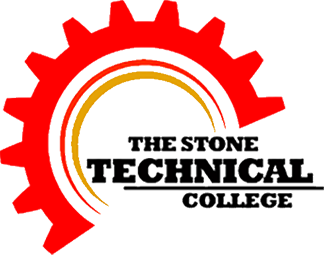Introduction
Garment making and pattern drafting are two processes that use measurements, derived from sizing systems or accurate individual measures taken on a person (or dress form) in order to create a new garment.
Clothing is one of a person’s essential needs, and people are becoming increasingly fashion-aware, especially in the twenty-first century. Garment stitching evolves in tandem with the evolution of the garment industry and societal fashion minds. As a result, taking into account market demand and changes in trend designs,
Garment production is a well-organized process with several steps. Laying, marking, cutting, sewing, inspecting, finishing, pressing, and packaging are examples. This is the procedure for converting raw materials into finished goods.
It is a structured activity that includes steps such as laying, marking, cutting, stitching, checking, finishing, pressing, and packaging. This is the procedure for transforming raw materials into final goods. Maintaining the industry will be tough if production is not up to standard and the preproduction phase of material preparation is not carried out adequately.
Product design, fabric selection and inspection, patternmaking, grading, marking, spreading, cutting, bundling, stitching, pressing or folding, and finishing are all part of the clothing manufacturing process.
Purpose of the vocational training program:
The training’s goal is to provide skilled workers to boost the existing garment-making business. This will boost the acceptability and disposition of clothing and costumes among consumers. The availability of such high-quality clothes in local and international marketplaces would ultimately benefit producers, users, and society as a whole.
The main objectives of the training program
The six month garment making and pattern drafting training Course is designed for trainees who wish to work in the garment manufacturing business and learn, grow, and practice as required by the market. The emphasis of this course is on the trainee’s acquisition of the capacity to perform as a professional dressmaker who is self-assured and knowledgeable.
The following are the main objectives of the training program:
- To acquire the skills and knowledge of garment making along with a fashion mindset on an ethical and digital basis.
- Quality production of garments.
- Produce skilled manpower for the garment industry in the field of dressmaking.
- Improve the level of skills of the fashion designers in the fashion industry in Nigeria and contribute to the economic growth of the country.
- Use of tools and equipment needed in the dress-making profession
- Learn sewing terminologies.
- Taking correct body measurements
- Prepare basic hand and machine stitches.
- Designing, drafting, pattern making, and fabric estimation.
- Cutting, tailoring, and finishing of garments
- Skill to develop presentable professional garments.
- Enhancing employability and entrepreneurial skills with good communication and leadership skills
Competencies gained after completion of the course
- Identify the various tools and equipment used in pattern drafting, cutting, and tailoring.
- Identify and practice basic (temporary and permanent) and decorative stitches.
- Take body measurements (length, width, and circumference) systematically.
- Master the use of sewing machines.
- Follow precautions while using a machine.
- Follow the rules of pattern making, layout, and fabric estimation.
- Design, draft, pattern making, cutting, sewing, and finishing of the garments as a professional.
Job Opportunities Available in the Garment Making Industry:
- Paid employment: You can get employment as a cutter, tailor, or checker in garment manufacturing industries or tailoring shops.
- Self-employment: he or she can open his or her own tailoring shop, do tailoring work at his or her own house, or take up orders online.
Learning Elements:
- Human Anatomy (identification of human body structure in accordance with dressmaking: accurate measurement-taking procedure)
- Market trends for fashion and design
- Design elements (variety of collars, sleeves, buttons, trousers, embellishments, etc.)
- Master the procedure and technique of measurements.
- Sensible usage (measuring fabric with folds and unfolds to avoid waste)
- Importance of calculating the proportions of the fabric
Pattern Development
This course covers the information, technique, and attitude necessary to create patterns for dressmaking. Students must be able to use pattern-making tools, assemble basic blocks, create patterns based on design requirements (sample, measurement), pick required blocks, carry out design modifications, and finalize the pattern by adding seam allowances.
Learning Elements
- The importance of pattern making in the garment industry
- List of pattern-making tools
- Specification of pattern-making tools
- Basic numerical skills
- Importance of grain line on pattern
- Types of blocks
- Basic bodice block
- Collar block
- Sleeves block
- Basic suspended panel block
- Princess block
- Skirt block
- Trouser block, etc.
- Drafting techniques and procedures
- Procedure for drafting patterns on card board.
- Importance of grain lines
- Tracing blocks
- Techniques for pattern making
- Interpretation of relevant techniques to achieve design variation
- Pattern making according to customized designs
- Incorporation of ease while finalizing the pattern
- Importance of labeling and cutting details
- Techniques for the use of pattern-making tools
- Universal standards of seam allowance
Develop, monitor, and refine the best production techniques and work sequences that will inform future production processes and identify continuous improvement in relation to work methods and garment quality.
Requirements
Professionals in the garment industry often require advanced training and certification. Many nations and regions have unique licensing criteria for fashion designers, which include finishing a garment-making program, passing a written and practical exam, and continuing education to stay up-to-date on the latest techniques. The Stone Technical College is an excellent place to train as a professional fashion designer and dressmaker.
Do you want to learn more?
If you would like to learn more about becoming a dressmaker or desire to upgrade yourself as a professional dress maker, we invite you to check out our courses on www.thestonetechcollege.com offered by The Stone Technical College. We can help you learn valuable skills to set yourself up for success in the dressmaking industry. Contact us today to learn more!






